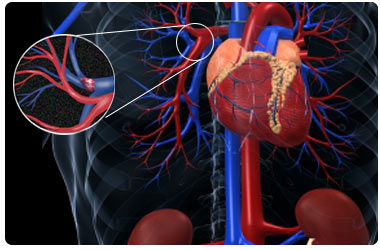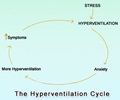About
Most of the time, the block is due to a blood clot (thrombus) that has detached itself from the deep veins in the legs and traveled all the way to the lungs. Hence, this process is known as venous thromboembolism.

Even under normal conditions, small particles of RBCs, platelets and fibrin aggregate to form microthrombi but they soon get lyzed in circulatory system; thus clot formation is prevented.
Under diseased conditions, the microthrombi fail to get lyzed. Instead, they grow, break loose from their site of origin and may form an ‘embolus’ that blocks the pulmonary vessels i.e. blood vessels supplying to the lungs. This leads to pulmonary embolism.
Embolism can also occur due to air, amniotic fluid or fat, which block the lumen blood vessels and obstruct blood flow.
PE attributes to 15% of all sudden deaths. Cancer and bedridden patients are at an increased risk for PE.
The frequency of deep vein thrombosis and
Acute pulmonary embolism can be classified into massive and non- massive. The mortality rate for the latter is 4-4.5% of PE patients while for the former it is 95.5-96%.
African-American patients are the biggest risk group with a 50% higher incidence than American whites.
PE affects both men and women but studies have shown that women are a little less affected by the condition in comparison to men. Increasing age too has a greater impact on disease occurrence.
Common symptoms include cough, breathing difficulty, chest pain while inhaling andcoughing up of blood. Diagnosis of pulmonary embolism is established by laboratory tests and imaging studies.
Venous thromboembolism and pulmonary embolism are diseases associated with advancing age. PE is treated with anti-coagulant drugs or blood thinners. Sometimes surgery is required.


![Pulmonary Arterial Hypertension [PAH] - Symptoms & Signs - Causes - Diagnosis - Treatment Pulmonary Arterial Hypertension [PAH] - Symptoms & Signs - Causes - Diagnosis - Treatment](https://www.medindia.net/images/common/patientinfo/120_100/pulmonary-arterial-hypertension-pah.jpg)








